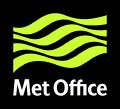Dataset
Met Office Projecting Future Sea Level (ProFSea) tool, input datasets
Abstract
The Met Office Projecting Future Sea Level (ProFSea) tool requires several input datasets, which are provided here and described below:
1. Coupled Model Intercomparison Project Phase 5 (CMIP5) model timeseries of global thermosteric sea level (zostoga) and spatial fields of ocean dynamic sea level (zos) on a regular 1 x 1 latitude-longitude grid.
2. UKCP18 CMIP5 slope coefficients calculated between local sterodynamic component of sea level (zostoga + zos) and global thermosteric sea level (zostoga).
3. A 450,000-member Monte Carlo simulation is produced for each RCP scenario that forms the basis of both the global mean sea level and local mean sea level projections. Essentially a Monte Carlo can be defined as a method that makes random draws from an underlying distribution multiple times to build up a distribution of the combined uncertainties. For details of the methods used for each component see Section 3 of Palmer et al. (2020).
4a. UKCP18 estimates of the effect of glacial isostatic adjustment (GIA) on relative sea level change developed for the NERC BRITICE-CHRONO project (Sarah Bradley, pers. Comm.; UKCP18 Marine Report).
4b. Estimates of the effect of GIA on relative sea level based on two of the three global estimates used in Palmer et al (2020). The first is based on the ICE‐5G (VM2 L90) model (Peltier, 2004). The other is from the Australian National University based on an update of Nakada and Lambeck (1988) in 2004-2005 (Slangen et al., 2014). These are gridded fields with global coverage.
5. The Gravity, Rotation and Deformation (GRD) estimates for each of the barystatic components: (i) Antarctic surface mass balance, (ii) Antarctic ice dynamics, (iii) Greenland surface mass balance, (iv) Greenland ice dynamics, (v) worldwide glaciers, and (vi) changes in land water storage. For details of the different estimates see Section 2.4 of Palmer et al (2020). These are gridded fields with global coverage.
Details
| Previous Info: |
No news update for this record
|
|---|---|
| Previously used record identifiers: |
No related previous identifiers.
|
| Access rules: |
Public data: access to these data is available to both registered and non-registered users.
Use of these data is covered by the following licence: http://creativecommons.org/licenses/by/4.0/. When using these data you must cite them correctly using the citation given on the CEDA Data Catalogue record. |
| Data lineage: |
Building on methodologies from IPCC AR5 and further developed in the UK Climate projections (2018) and the Strategic Priorities Fund UK Climate Resilience Programme, this data facilitates a globally relocatable sea level rise tool published by the Met Office. The “description” section contains the details for specific data products this tool incorporates. The scientific methods are based on the work of Palmer et al (2020), and very similar to those described in the UKCP18 Marine Report. Full details of the data sources and processing are available in Palmer et al (2020). |
| Data Quality: |
Met Office Quality Assurance processes and standards have been applied to the development and documentation of this tool and its outputs.
|
| File Format: |
This dataset contains data in netCDF and pickle file format.
|
Related Documents
Process overview
No variables found.
Temporal Range
2007-01-01T00:00:00
2100-12-31T23:59:59
Geographic Extent
90.0000° |
||
-180.0000° |
180.0000° |
|
-90.0000° |

